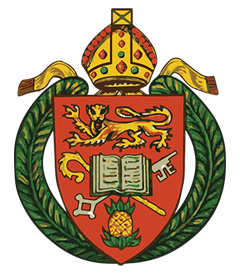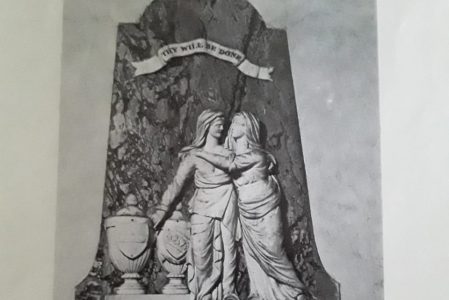When Father Sean Major-Campbell said in the June 2020 issue of The Anglican, that “Conversations about statues, buildings, monuments and other symbols relating to the colonial experience have now taken centre stage,” he could not have imagined that in 2021 the ‘centre stage’ would be the venerable Church of England itself.
The (British) Guardian in an article on May 9, 2021 said that “The Church of England is to review thousands of monuments in churches and cathedrals across the country that contain historical references to slavery and colonialism, with some expected to be removed.” It said that guidance would be given to the Church’s 12,500 parishes and 42 cathedrals to “scrutinize buildings and grounds for evidence of contested heritage, and consult local communities on what action to take.”
The article continued “Although decisions will be made at a local level, the guidance stresses that ignoring contested heritage is not an option. Among actions that may be taken are the removal, relocation or alteration of plaques and monuments, and the addition of contextual information. In some cases, there may be no change.”
For the full article see: https://www.theguardian.com/world/2021/may/09/remove-or-alter-your-slavery-monuments-churches-are-told
The Church Times in an article on May 11, 2021 said that the guidance document, Contested Heritage in Cathedrals and Churches, had been published by the Church Buildings Council and the Cathedrals Fabric Commission for England. It offers parishes and cathedral chapters a “framework on what to do about plaques, statues, inscriptions, and other monuments in their buildings which are dedicated in memory people who have been associated with racism.”
It arned that “Reviewing a historic object requires extensive research and discussion and “may involve facing uncomfortable truths”, “Conversations around the roles of memorials necessarily touch on the Church’s own complicity in structural sin.”
The article noted that “The guidance comes after Justin Welby, the archbishop of Canterbury, called for a review of the C of E’s built heritage following the Black Lives Matter protests last summer and the toppling of a statue of slave trader Edward Colston in Bristol. “Some [statues and monuments] will have to come down,” Welby said at the time”. For the full article see:
In an article in the October 2020 issue of The Anglican entitled “Monuments and Memorials in Our Churches” I had referred to the agitation for the “removalof aplaque on the walls of St. Peter’s Church, Dorchester, in England, commemorating the “bravery” and “humanity” of estate owner John Gordon, following the “instrumental” part he played in suppressing the 1760 rebellion (The Tacky Rebellion) in Jamaica in which almost 500 slaves were killed”. The Church had added a notice next to the plaque, which stated that: “This memorial is of its time. Using language and commemorating actions which are totally unacceptable to us today. Its future is under active consideration.” In fact, the Church was planning to remove the monument.
As I noted in that article, and raise again for consideration, what are we to do with the numerous monuments and plaques which grace the walls in most of our historical churches commemorating the lives of many ‘leading citizens’? Many of these persons were slave owners as well as members of the army and militia dedicated to maintaining law and order. Take for example, the monument in St John’s Church, Black River to Duncan Robertson. The inscription said that Robertson was a member of the Privy Council, a Custos of the Parish and a Major General. It went on to say “As General of the Militia the essential service he rendered his country in assisting to quell the rebellion of 1831 will long be remembered.”
The inscription demonstrates the ironies of history because the 1831 Rebellion, known as the Christmas Rebellion or the “Baptist War” played an important role in ending slavery and was a watershed in the history of the country. In 21st century Jamaica, what message does that monument to Duncan Robertson communicate to the descendants of the many enslaved persons who were killed in that rebellion and similar uprisings as they fought for freedom?
The question is, what should we do with these types of monuments? In the case of Robertson, I suggest we have three choices. The first is to do nothing, the second is to remove it, and the third is to leave it in place and use it as an educational tool by placing it in a context relevant to us today. This could be done by erecting a sign board beside it, giving a brief history of the 1831 Rebellion, the contribution of National Hero Samuel Sharpe, and the crucial role this rebellion played in the abolition of slavery. This way, our members and visitors would have a fuller appreciation of the events of 1831, as although the rebellion was suppressed at the time, the end result was freedom for the enslaved population a few years later.
The decolonization of our worship in this Diocese is evident, especially in the use of music; and also in the architectural design of the buildings, and the artwork by prominent local artists which now hold pride of place in several churches. The Rev. Hilda Vaughan of St. Mark’s Church Mandeville, in the same October 2020 issue of The Anglican, wrotean article entitled “Black Images in Diocesan Churches” in which she pointed to some of the many paintings and statutes which represent our African heritage as the Church has moved towards developing an indigenous identity. She noted that “The Black Lives Matter protests worldwide about police brutality against African-American people have sparked much discussion about the use of culturally relevant icons in Church and Christianity and the representation of Jesus as a white man.”
I agree with the Rev. Father Sean Major-Campbell, when he said in the June 2020 issue of The Anglican with reference to our own Diocese, that “There must be of necessity a conversation about the monuments of planters. However, one observes that through the evils of plantation slavery, the Bible and the Church have travelled to this day where many of the descendants of slaves now use the contexts of Bible and Church, to condemn slavery, racism, and white supremacy, while using the very “tools” of enslavement to embolden the work of liberation – albeit a long journey”
Ultimately, we must be bold as we come to terms with our own ‘Contested Heritage.’
John A Aarons
Diocesan Archivist





